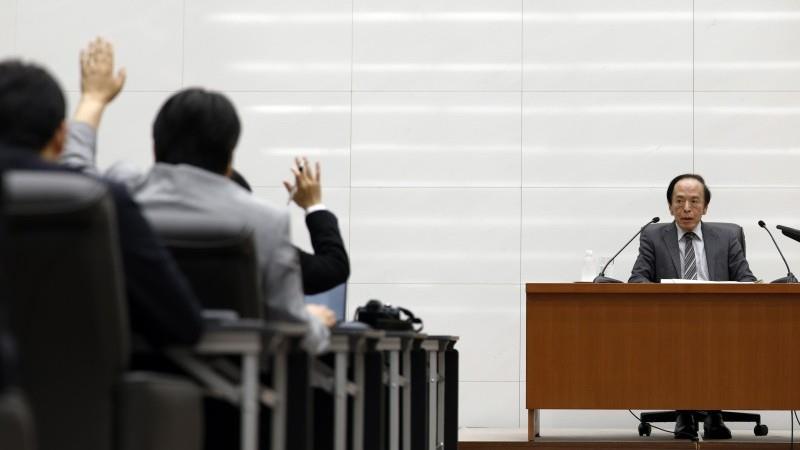
Bank Of Japan Holds Rates With Two Dissenting Votes December Hike Still Possible
| 0.5% |
BoJ target rate
Two dissent votes |
| As expected |
The Bank of Japan vote was split once again 7-2, with Hajime Takata and Naoki Tamura dissenting by calling for a 25bp hike. The two members argued that inflation is approaching the target, and that the policy rate should be closer to neutral.
The BoJ's assessment of the economy has improved slightly, but it still emphasises uncertainty, including the impact of trade policies, demonstrating a still-cautious approach to policy decisions. The Bank revised up its full-year 2025 GDP outlook from 0.6% to 0.7%, while those further out on the horizon were kept unchanged (0.7% in FY26 and 1.0% in FY27). Stronger-than-expected growth seen in the second quarter of this year was likely the main reason for the upward revision, but we may still see some negative impact from US tariffs on the economy moving forward.
On the inflation outlook, the core-core rate is expected to slow but stay above 2% for the next three years. The FY25 outlook remained the same at 2.8%, but the FY26 outlook was revised up to 2.0% from the previous 1.9%. We think the new outlook report suggests that a rate hike is on the way – but there isn't yet strong enough evidence to cement a December hike.
Progress in major trade talks may lessen global economic risksThe US and Japan signed a trade deal this week, and several other Asian countries are expected to finalise agreements with the US around the APEC summit. South Korea has already done so; recent talks have also resulted in reduced tariff rates for China, as well as stabilised goods trade of soybeans and rare earths between the two nations.
We believe that recent developments will provide the Bank of Japan with more confidence over the coming months, and in turn, the chance to finally pivot to delivering a rate hike in December. Third-quarter GDP is expected to contract, mainly due to the unwinding of front-loading exports in the second quarter of this year. However, a gradual recovery should materialise in the coming quarters thanks to a de-escalation of the tariff issue and fiscal support from the new government.
Inflation is also expected to remain above 2% for an extended time, supported by strong wage growth. Headline inflation may decelerate due to government subsidies for energy and social welfare programmes, but core inflation is likely to hover around 2.5% for an extended time.
The elevated USD/JPY level is likely to add to inflationary pressures, and this should be a concern for the Bank of Japan.
Tomorrow, Tokyo CPI inflation for October will be released. This should see a rebound in the monthly comparison, with services prices rising and core CPI likely accelerating.
While BoJ Governor Kazuo Ueda's comments were quite dovish – as he tried to avoid any hints about future rate hikes in the near future – this doesn't mean a December hike is off the table. We also don't believe that the new Prime Minister, Sanae Takaichi, will make any strong comments on the BoJ's policy. Rather, she will focus on the fiscal stimulus bills, which are likely to be formed in November, and aim to include more measures to keep inflation anchored.
USD/JPY bear trend put on holdMost agree that the yen is substantially undervalued, but the factors expected to drive a move lower in USD/JPY are fading. With focus very much now on the reflationary Takaichi trade after recent elections, a lower USD/JPY requires either a dovish Federal Reserve or hawkish BoJ – and preferably both. Neither of those has emerged over the last 24 hours. And unless some Japanese data can firm up the idea of a December BoJ rate hike (now priced at a 45% probability), the near-term risks to USD/JPY look to be 155.
Driving that story is now a Fed questioning whether the neutral policy rate is closer to 4% than 3%. And there's much uncertainty over whether the direct Japanese investment demanded into the US as part of the US-Japan trade deal now stands to keep USD/JPY supported too. Again, it was interesting to see the recent move in USD/KRW lower after an agreement to limit Korean investment to the US at $20bn per year – an amount authorities felt the FX market could handle without weighing on the Korean won.
Until we get some softer US jobs data to firm up the idea of a December Fed rate cut, 155 looks to be the direction of travel for USD/JPY. Should we make it into the 155-160 region, expect verbal intervention to ratchet significantly higher, and we would again expect authorities to intervene to sell USD/JPY in the 158/160 area - as they did in 2024. But certainly, the case for USD/JPY to be trading substantially under 140 next year is fading.

Legal Disclaimer:
MENAFN provides the
information “as is” without warranty of any kind. We do not accept
any responsibility or liability for the accuracy, content, images,
videos, licenses, completeness, legality, or reliability of the information
contained in this article. If you have any complaints or copyright
issues related to this article, kindly contact the provider above.

















Comments
No comment